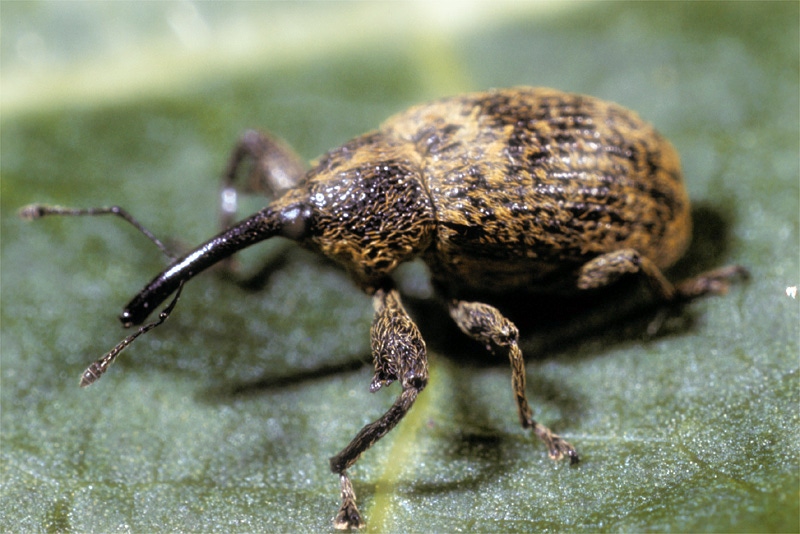
It’s been a long road to travel but the Arkansas boll weevil eradication effort has reached a new milestone. Not only has the state been free of the cotton pest since 2006, it has now retired the debt it was necessary to incur in order to send the weevils packing.
And, impressively, the Arkansas Boll Weevil Eradication Foundation (ABWEF) made that final payment three years early.
On September 29, it was announced that a final payment of $2,059,947.11 had been authorized to USDA’s Farm Service Agency, which held the note.
“This is a huge milestone for Arkansas,” said Darryl Little, director of the Arkansas State Plant Board. “It will save cotton farmers thousands of dollars, and it is to their credit that this program has been successful in Arkansas, and the debt is now paid in full. Arkansas is a leader among cotton producing states in the United States and cotton production is essential to our agricultural economy. This is a great day for Arkansas agriculture, especially Arkansas cotton growers.”
On September 30, Regina Coleman, ABWEF Executive Director, spoke to Delta Farm Press about the accomplishment. Among her comments:
Was paying the debt off early the plan all along? Did you step up those efforts more recently?
“In the past four years, the board really focused on getting this done. In the last couple of years we’ve been in a position to do some downsizing -- employees as well as office locations. That cut expenses and so everything extra went to paying the debt off.”
On the current monitoring effort…
“We’re in the maintenance phase of the program. We go by a trap protocol set by the Technical Advisory Committee (TAC).
“The traps are on a one-mile spacing wherever there is cotton. We’re on a three-week schedule so one-third of traps are checked every week. The pheromone traps and lure strips also have to be replaced every three weeks.
“We also have a trap line along the Texas/Arkansas border. That’s because Texas still has an active eradication program in the (Rio Grande) Valley. Texas is the only state still with an active program.
“The trapping program will run indefinitely. So long as there are boll weevils in the country, we’ll keep this going.”
Acreage comeback?
How will the monitoring ramp up if cotton acres come back?
“Trapping will stay the same, unless we catch a weevil or if the TAC committee changes trap protocol. If acres come back that would increase assessment income since the assessment works on a per-acre basis -- more acres means more total income from assessments. And with no debt more acres should enable us to keep the per acre assessment lower.
“We do have a reserve for operational expenses. That reserve is for about two years’ worth of maintenance.
“When the acres come back up, the only real changes we’d have to make would be increasing staff. Currently, I have a person assigned to each zone in the state. The way the trapping is set up means things run smoothly.
“There is a Southwest Zone around Texarkana even though there’s no cotton there this year. The Southeast Zone runs from around Lake Village up to Little Rock. The Central Zone starts around Snow Lake and runs up to Newport. The Ridge Zone covers four counties: Clay, Greene, Poinsett and most of Craighead. The Delta Zone comprises mostly Mississippi County and a portion of Craighead.
“The program began in the Southwest Zone then the Southeast Zone was added a year later. Those were followed the Central Zone, the Ridge Zone and then the Delta.
“Trapping is the most important part of the program but grower contact is important too. That’s where we get most of the information about where cotton fields are located. Every season we visit with growers to see where their cotton is going to be. That’s where the most time is spent. The trap inspections become routine once we have the traps set.”
Since eradication was announced, have you gotten calls from well-meaning, vigilant folks who believe they’ve found a boll weevil? Do you have to go investigate things like that?
“Yes, we do. It’s amazing to me where we’ve come with the program.
“I’m into my sixteenth season with the program. When the program began in the Central Zone, we were catching 2,000 weevils per day. Now, we catch nothing.
“But there are people – especially some of the younger farmers -- who have never seen a real boll weevil in their lifetime. So, we get a call every season from someone who thinks they’ve caught a boll weevil.
There are lots of weevils out there but they aren’t boll weevils. As of today, we haven’t caught a boll weevil since 2006.”
Anything else?
“We’re certainly hoping there’s a return to more cotton acreage.
“I don’t anticipate boll weevils returning to the state unless there’s some major outbreak in Texas and the weevils head back this way. Another possibility is if some weevils hitchhike on harvesting or other farm equipment coming back from Texas.
“There are USDA guidelines for equipment cleaning prior to transport. They’re trying to keep pests -- not just boll weevils -- and disease from spreading.
“When we know equipment has been carried to another place where there are weevils being trapped, we’ll go where it’s parked and set up traps. We want to monitor those locations to ensure no weevils have been brought in.
“Another goal we have is to eventually lower the assessment cost to Arkansas cotton growers. That’s something the board will be looking at.”
About the Author(s)
You May Also Like




